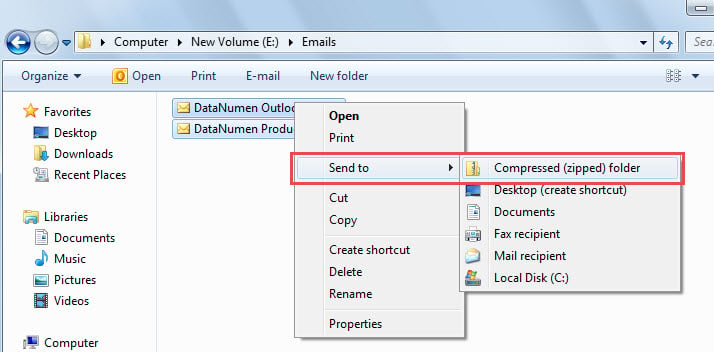
- #How to compress pictures into a folder to email how to#
- #How to compress pictures into a folder to email full#
#How to compress pictures into a folder to email how to#
How to Compress Files, Folders or Drives in Windows 10 via Properties If those methods to use are not available to you, you might need to activate Windows 10 NTFS compression before as we are showing you as well at the end of this page. We’ll to so via two methods: File Explorer properties and the Windows compact command. Now that you’re aware of all the details, we’re going to walk you through how to compress a folder or files in Windows 10. However, while CompactOS does its best to reduce Windows 10’s size without impacting performance, it does have a minor negative impact.
#How to compress pictures into a folder to email full#
It can act as an alternative to full NTSF compression on your system drive, only saving space where it impacts performance the least.Īs a result, you don’t stand to gain much from CompactOS use – between 2GB and 5GB of space – but that can be a lot if you’re working with a 64 or even 32 GB drive. What is the difference to CompactOS compression in Windows 10?ĬompactOS only compresses certain system files to free up space in Windows 10. Unlike in the case of a compressed ZIP file, NTFS compressed files (and folders) behave just like any other files and can be used without any further action by you and any software without the need to disable compression beforehand. Windows 10 NTFS compression is a feature that works seamlessly and does not change a file´s format.
:max_bytes(150000):strip_icc()/rename-zip-file-windows-10-5b802b28c9e77c00505d73de.png)
What is the difference to compressing files with ZIP, RAR and similar? Instead, you should look to use Windows 10 compression on your family photo library, for example, or perhaps on smaller documents.

NTFS compression can degrade performance in some cases as your PC uses some resources to compress and uncompress files in the background.Īs a result, programs, complex files, and videogame files aren’t typically a good choice for compression. You can compress a folder (or complete drive) in Windows 10 when you’re struggling for space and have files that you use infrequently or are of low impact.


 0 kommentar(er)
0 kommentar(er)
